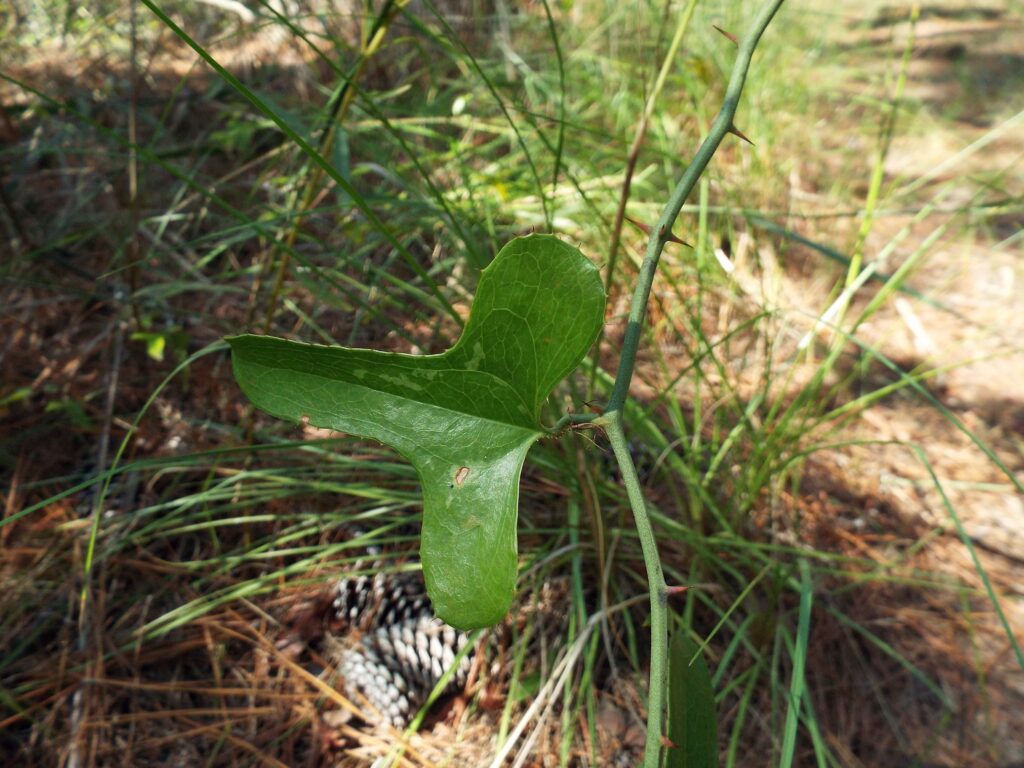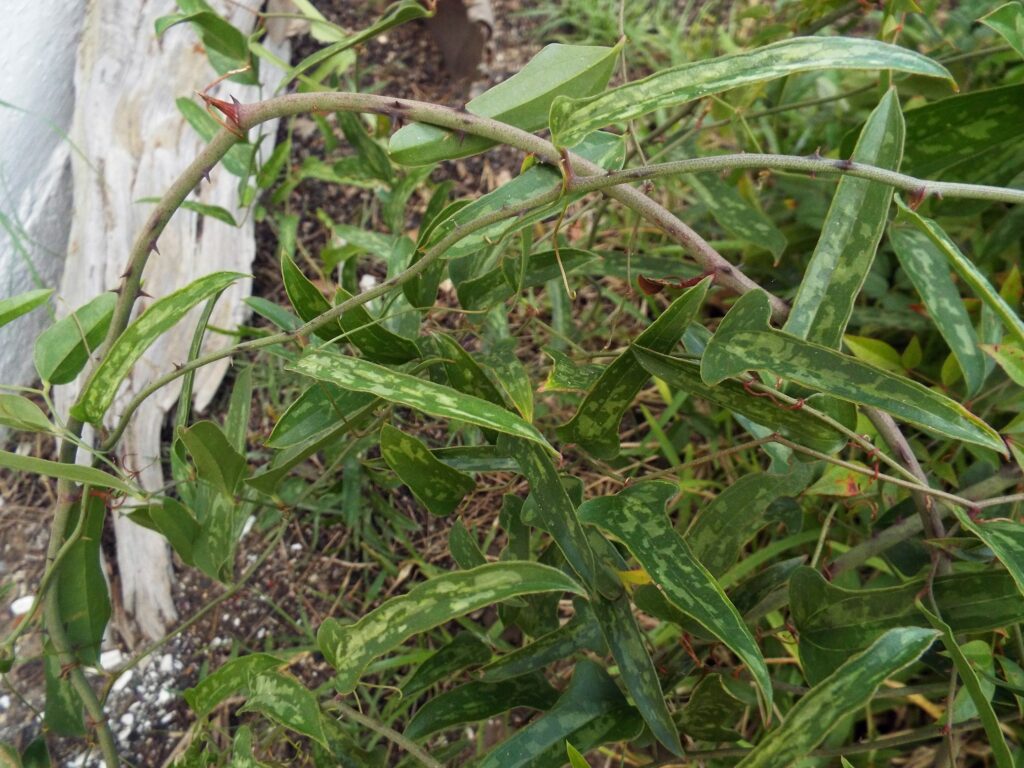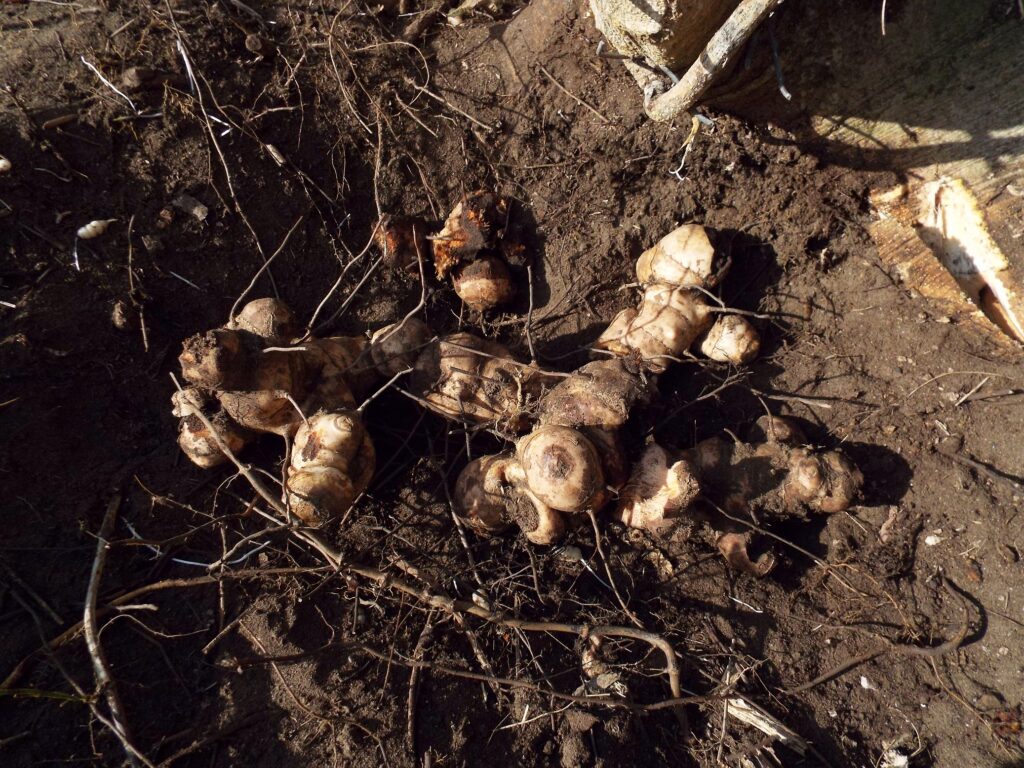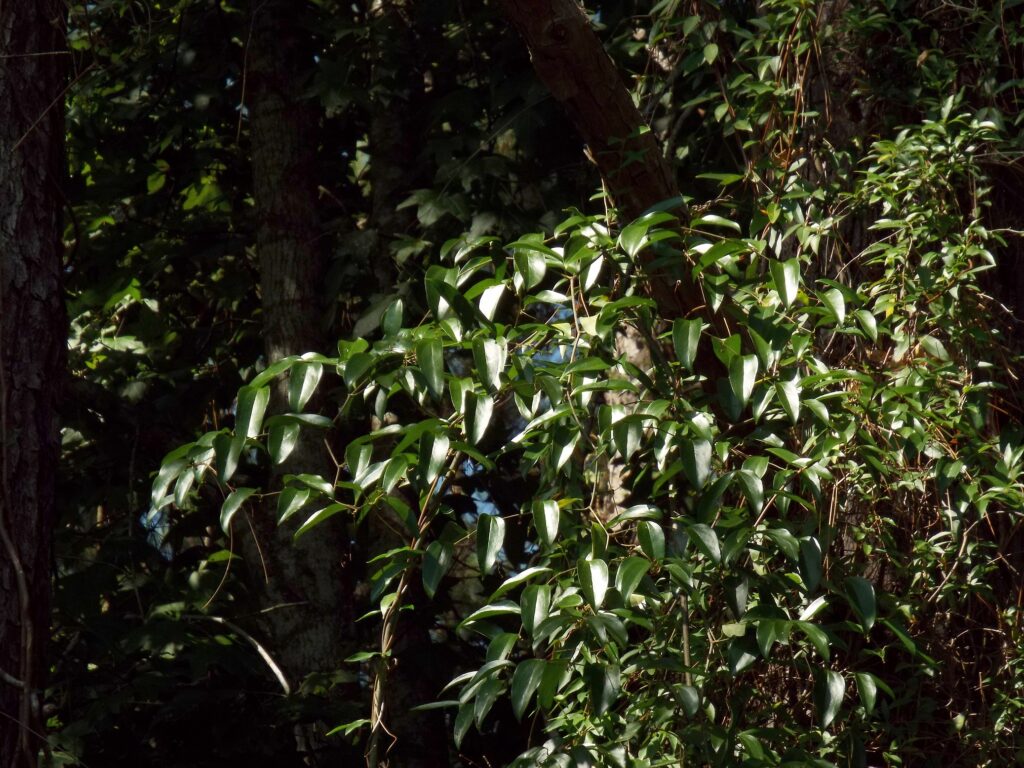
This week for Flora and Fauna Friday, we have a genus of edible evergreen vines that’re every bit as stubborn as they are thorny. This week we’re talking about the Greenbriers, genus Smilax.
Greenbriers used to belong to the Lily family but have since been placed in their own, Smilacaceae. This is a group of plants that I’m sure all you gardeners and landscapers on the island are well acquainted with. There are eight common species in our area. All these common species share the traits of being woody vines with simple evergreen leaves. They climb with tendrils, grow starchy rhizomes, bear small clusters of pale-green flowers, and produce small dark berries. These berries are an important food source for birds in the winter months. Members of this genus were also an important food source for Native Americans. The new shoots in spring are edible raw and, I can tell you from firsthand experience, taste like a mix between asparagus and Japanese matcha tea. The young tubers are also edible when cooked and are full of starch.



Sawtooth Greenbrier (Smilax bona-nox) is the most common species you’ll encounter inland. It’s also one of the easiest to identify. This species sports a signature margin of spines along the edge of its leaves. Its stem is encircled with stiff thorns up to half an inch long. These thorns protect the vine from girdling by deer and other herbivores. Sawtooth Greenbrier, and a few of the other species, produce a massive clump of branching rhizomes beneath the soil. These rhizome networks can reach several feet in diameter and weigh dozens of pounds. (The one pictured is a small section of a rhizome that filled a five-gallon bucket after I dug it up!) These rhizomes allow the plant to withstand drought conditions and, if need be, regenerate after it is cut or broken. I’ve seen shoots exceeding two inches in diameter at the base (imagine a thorny shovel handle) that came from rhizomes that might be over a hundred years old!

Another common inland species is Lanceleaf Greenbrier (Smilax smallii). Lanceleaf Greenbrier is the highest climbing species of Greenbrier in our area and can climb 40ft high into the tree canopy. It has shiny green, slightly triangular leaves and very few thorns on its stem. Laurel Greenbrier (Smilax laurifolia) is very similar to Lanceleaf Greenbriar in many respects but has thinner, more light-green leaves and prefers growing on top of bushes in sunny thickets or forest edges.

Coral Greenbrier (Smilax walteri), Roundleaf Greenbrier (Smilax rotundifolia), and Cat Greenbrier (Smilax glauca) are also common in wooded habitats. These species vary in their degree of thorniness and all possess large leaves but have berry colors distinct from one another. Coral Greenbrier is best identified by its preference for wetlands and brilliant red berries in winter. Roundleaf Greenbrier is characterized by its large, almost circular leaves when growing in shady habitats and dark, black-blue berries. Cat Greenbrier is similar to Roundleaf Greenbrier but layers a powdery blue-white veneer across its berries and the undersides of its leaves.

Earleaf Greenbrier (Smilax auriculata) is found most often in sandy soils near the coast or on sand dunes and hammock islands. Its leaves sport a pair of “ears” at the base that give them an arrowhead-like appearance. Earleaf Greenbrier, along with other dune species, help to protect the dunes from erosion by holding soil with its roots and trapping wind-blown sand. This species is just as savagely armed as Sawtooth Greenbrier and has a particularly tough stem.

Sarsaparilla Vine (Smilax pumila) is unique from the other species I’ve talked about so far. It is small, thorn-less, grows low to the ground, and prefers to grow in shaded forest understories. This species, along with several others in the genus, are the plants that the root beer Sarsaparilla was traditionally made from. This species is best recognized by its wrinkly leaves with a rusty hue and a coat of fine hairs. Their spherical clusters of inconspicuous yellow flowers produce small, red, oblong berries.